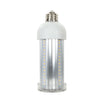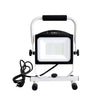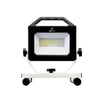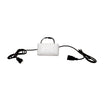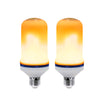Lighting affects our mood, productivity, and even energy bills. Two commonly used lighting technologies are LED (Light Emitting Diode) and incandescent bulbs. We’ll explore the differences between LED and incandescent lighting and highlight the numerous advantages of LED lights over their incandescent counterparts.
LED vs. Incandescent: A Brief Overview
Technology and Composition:
LED stands for Light Emitting Diode. LEDs create light by passing an electric current though these semiconductor diodes which causes the Diodes to release photons.
Incandescent bulbs work by passing an electric current through a filament which causes the filament to heat up and glow. This method requires more electricity and creates more heat.
Energy Efficiency:
LED lights are significantly more energy-efficient than incandescent bulbs. The level over efficiency can vary depending on the diodes of each bulb. LEDs average roughly 80% energy savings compared to traditional incandescent bulbs when delivering the same amount of light output. Incandescents spend most of that excess energy as heat.
Lifespan:
LED lights have a much longer lifespan compared to incandescent bulbs. Certain GT-Lite products are rated to last between 50,000 to 25,000 operational hours. When used 3 hours a day for 7 days a week, these bulbs can last 45+ year to 23 years depending on the rating.
Incandescent bulbs typically last around 1,000 hours, and can require multiple replacements to match the lifespan of an LED bulb.
Light Quality:
LED lights offer a wide range of color temperatures ranging from warmer color temperatures like soft white to cooler temperatures such as daylight. They also offer excellent color rendering, which means LEDs show the true color of a object more clearly. This is useful for paint shops, wood shops, and more locations where accurate colors are very important.
Incandescent bulbs emit a warmer color temperature light from the glowing filament, which is often appreciated for its warm ambiance but can be less versatile. The filament also offers a much lower CRI rating which is not ideal for spaces that need to see color accurately.
Environmental Impact:
LEDs are the more environmentally friendly option due to multiple reasons. Mainly, they use less power and have longer lifespans so they don’t fill up landfills as quickly.

